 CHRIS COLLARD
.
October 03, 2023
.
Feature Stories
CHRIS COLLARD
.
October 03, 2023
.
Feature Stories

What are the odds of finding a stray push rod in the middle of the Nevada desert? Pretty thin, right? And the odds of it laying in such a position to pierce a hole in your tire? Well, you probably have a better shot at finding a Bitcoin in your backyard, but there we were pulling the offending metal shaft from my buddy’s tread block. Back then (we’re talking late ‘80s) we didn’t carry tire plugs or patches, so we swapped in his spare and continued on… spareless. But times they are a changin’, and with the tools now available to repair a tire in the field, running spareless should be a thing of the past. In this Backcountry Skills, we are going to review a few high-quality tire repair kits, then dive into everything from simply plugging a nail hole to performing major surgery.
Back in 1964, Alec W. Niconchuk began developing the first self-vulcanizing tire repair system. His company was called Safety Seal, and his plug method became the model which countless others have emulated. While there are many companies boasting a better or cheaper mousetrap, the most important thing is to get the best one you can afford. I would strongly avoid the cheap $10 units found at discount stores, as you may spend much more coin at the ER when the plastic handle breaks and you shish kebab your hand. The kits I carry (for my multiple rigs) are from ARB, Power Tank, Extreme Outback Products, and of course, Safety Seal. GlueTread is the new kid on the block, and now included in my tire repair kit. Let’s take a look.

These two products come in a durable plastic case containing yarns, insertion and reaming tools, a razor blade, and lubricant. Safety Seal offers kits (all made in the USA) suited for everything from semi-truck tires to UTVs. You will note the sliding plug retainer on both insertion tools (a handy add-on), and ARB expands the roster with an air gauge and assortment of valve stem accessories. Both are high quality units and will handle most puncture repairs.
As the purveyor of CO2 onboard air systems, it is only natural that Power Tank offers a repair kit. It includes premium yarns and steel reamer/insertion tools, needle nose pliers, air gauge, razor, and their Rescue Valve, a replacement valve stem that can be installed without removing the tire from the rim. Also included is a length of steel wire for…well, we’ll get to its purpose later. Everything is wrapped in a ballistic nylon roll with MOLLE attachment points, replete with illustrated instructions.
Outback takes things to the next level with its Ultimate Puncture Repair Kit. Not only is each component sourced from the best manufacturers, but there are enough consumables to keep you on high ground during a trip of nearly any duration. They step up options with the inclusion of a variety of patches ranging from mini to the massive Baja Boot (a Dick Cepek concept back in the day), as well as waxed polyester thread and stitching needles. The durable canvas bag also includes a buffer/roller, air gauge, rubber cement, hand wipes, valve cores and accessories… you name it.
TIP: Repairing a tire is serious business. Don’t cheap out with discount store tools.
Plugging a tire is ‘usually’ the simplest of trail repairs. It can be done without removing the wheel, and often before the tire is fully deflated. If you notice a low tire and don’t hear a hiss, first ensure that the valve core is not leaking. Put a little saliva on your finger, lightly place it on the opening, and look for bubbling. Also look for any debris that might be jammed in the bead between the wheel and tire. If the cause is a nail (or push rod), you’ll need to roll the vehicle until the offending object is accessible.


TIP: Make sure to insert the reamer at the same angle as the offending object that entered the tire.
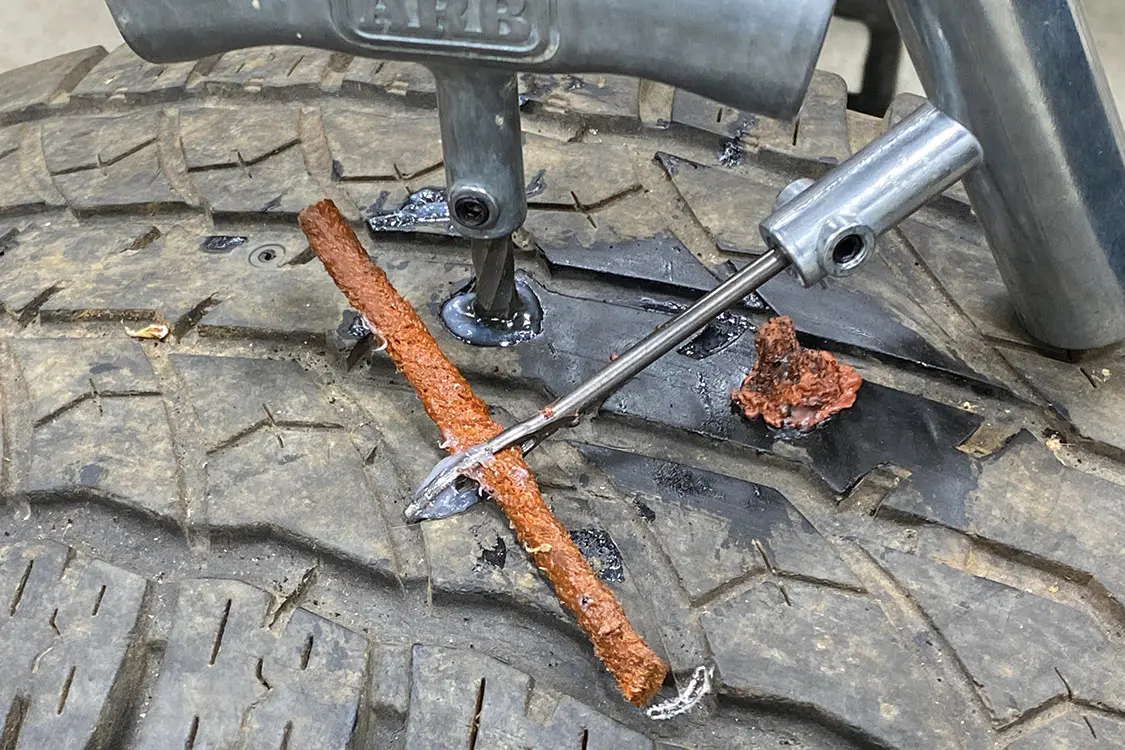



TIP: After any tire repair, pour water over it to check for leaks (bubbling).
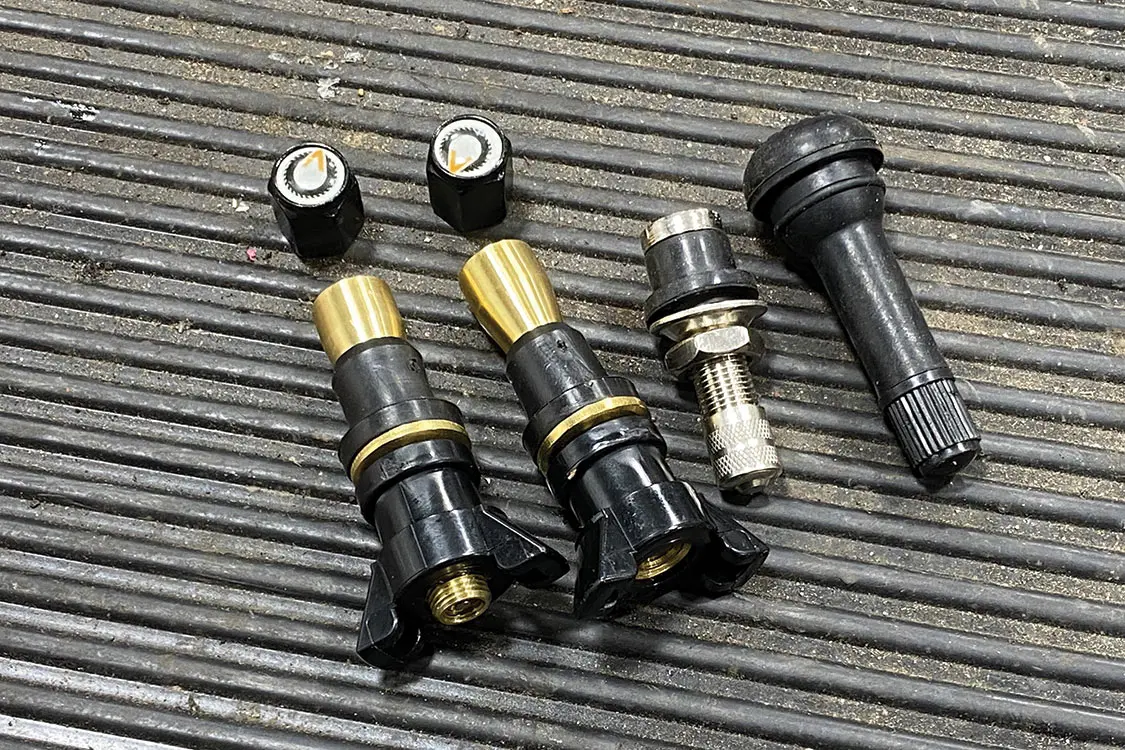


That broken stem or a puncture that requires more than plugs to fix will necessitate dismounting the tire from the rim. Tools needed are a set of Tyrepliers or a Hi-Lift jack, and tire irons, also called tire spoons. You can get by with just the spoons and a Hi-Lift jack, but Tyrepliers make the job much easier. Before you start, be sure the tire is fully deflated, and put a chalk mark on the tire where the valve stem is. Matching these marks when remounting will help to keep it semi-balanced. Also, have a squirt bottle of water or Camp Suds on hand to keep tire/bead contact surfaces lubricated.
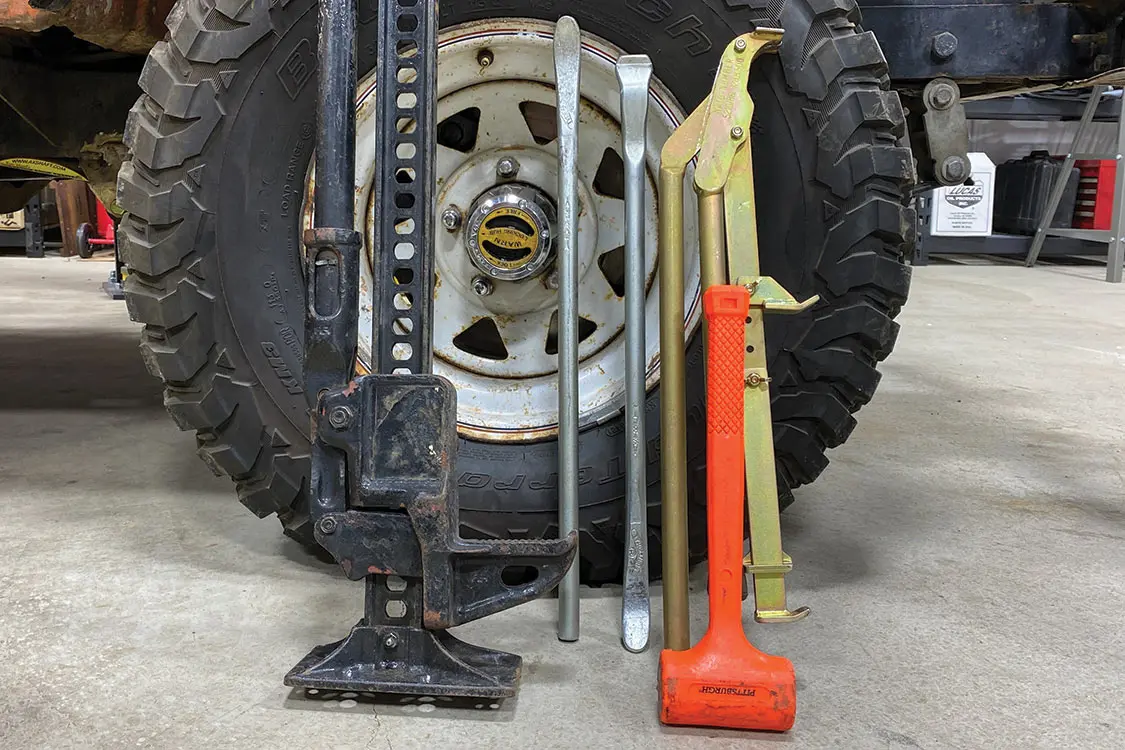
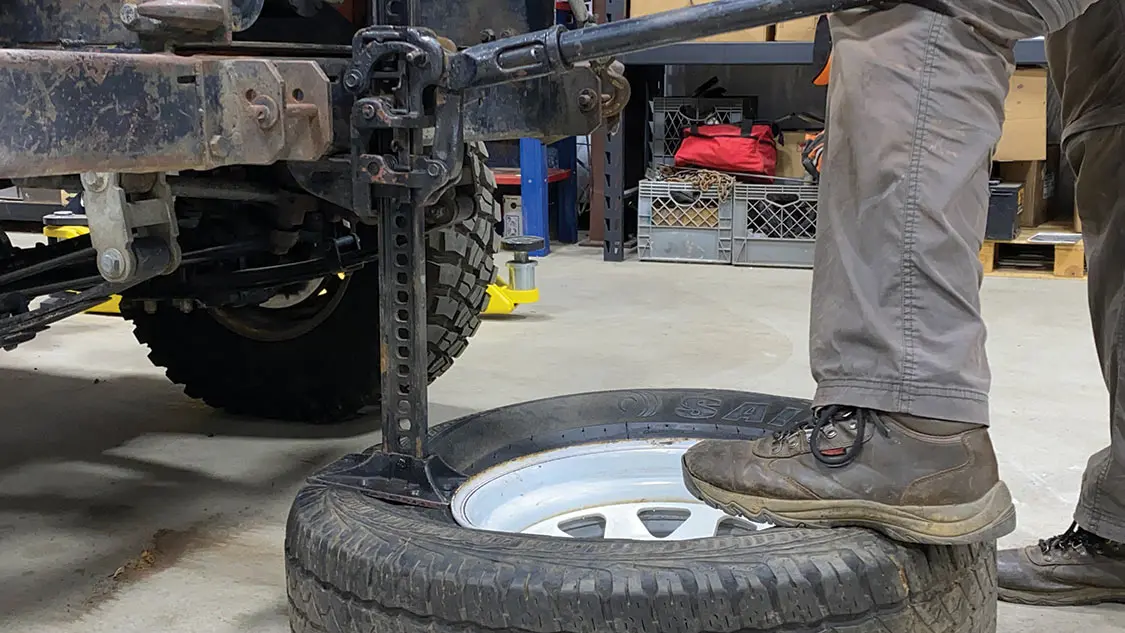
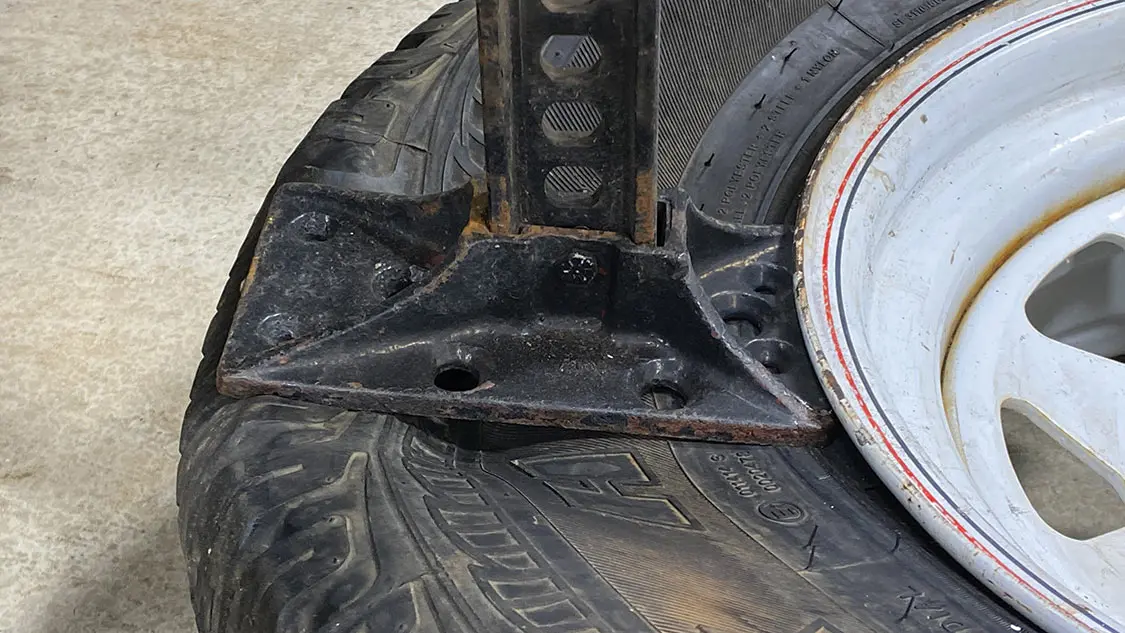


TIP: Lubricating the tire/bead interface with soapy water will make dismounting and mounting much easier.
In the name of safety (and to keep the attorneys happy), all of the repairs shown here are temporary fixes—just enough to get you off the trail. Though I’ve had plug repairs last the life of a tire without issue, a tire with sidewall damage is destined for the recycler. The U.S. Department of Transportation states, ‘Repairs must be made to the inside of the tire and should not exceed .25 inches in diameter for passenger cars and light trucks… Repairs to sidewalls and shoulder areas of the tire are not allowed.’ Have a qualified tire shop determine if it’s toast or street worthy. Failed brakes, steering, and tires can kill a fella, so don’t take chances.
Extreme Outback Products: www.extremeoutbackproducts.com
Safety Seal: www.safetyseal.com
ARB: www.arbusa.com
Power Tank: www.powertank.com
Hi-Lift: www.hi-lift.com
GlueTread: www.gluetread.com
In the next Backcountry Skills, we’ll be addressing more catastrophic tire SNAFUs…the dreaded sidewall gash. But fear not my rubber-footed friends, there is a trail fix for this one too. In the meantime, I suggest sourcing the gear, grab an old tire from behind the barn, punch a few holes in it, and practice. You may never run into a renegade push rod in the middle of the Nevada desert, but if one bushwhacks your dogs at least you’ll know what to do.
See you on the trail,
Chris
We use cookies to enhance your browsing experience, serve personalized ads or content, and analyze our traffic. By clicking "Accept All", you consent to our use of cookies. Visit our Cookie Policy for more info.
Notifications
Share Link